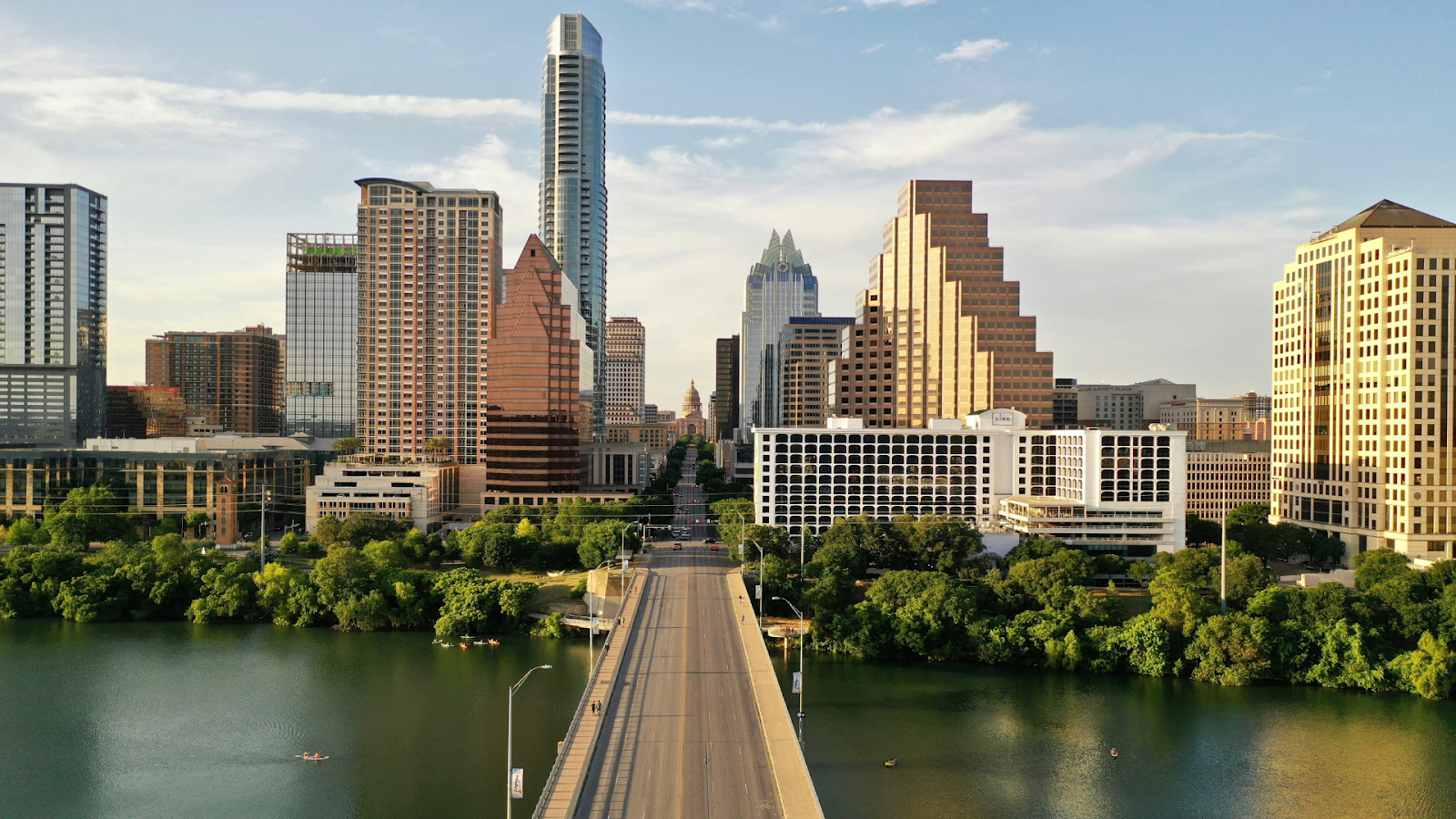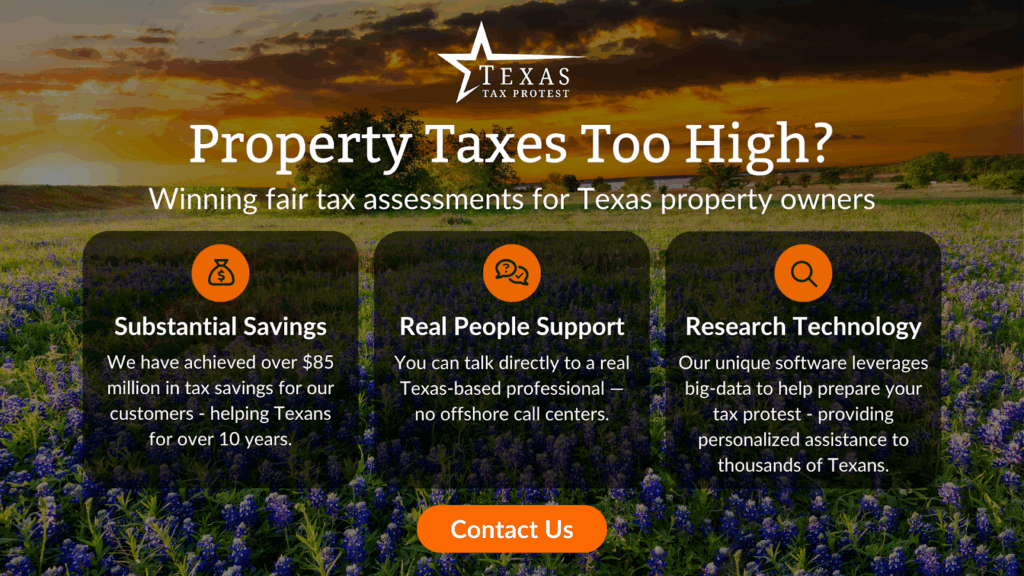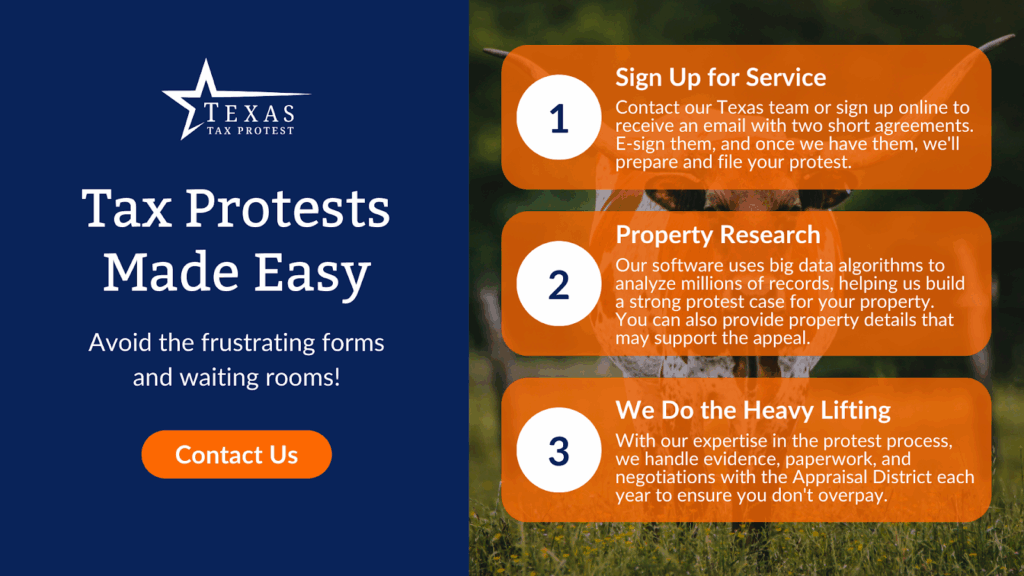
What Is the True Cost of Living in Texas? Housing, Utilities, Taxes & More
August 8, 2025
Key Takeaways:
- Renting vs Buying, Property Taxes, and Home Exemptions: Monthly housing costs vary across Texas, with renters generally paying less upfront while homeowners take on taxes, insurance, and maintenance. Property taxes can differ significantly from county to county, but exemptions can help reduce your taxable value.
- Utility and Grocery Costs in Texas: Electricity bills often rise in the summer, while water rates depend on city infrastructure and seasonal use. Grocery prices tend to be higher in metro areas and lower in rural towns, and sales tax applies to prepared foods and dining out in many counties.
- Transportation Expenses and How They Can Add Up: Long commutes, rising insurance premiums, and regional fuel prices contribute to higher transportation costs in Texas. Public transit offers savings in larger cities, but limited access in rural areas means many residents rely on personal vehicles to get around.
Moving to Texas, or just making sense of your expenses in the Lone Star State? The cost of living in Texas offers both remarkable bargains and eye-opening surprises. Beyond the sprawling suburbs and big-city opportunity, there’s another layer you can’t afford to ignore: property taxes and their role in shaping the bottom line for residents.
At Texas Tax Protest, our team works directly with homeowners, commercial property owners, veterans, and first-time buyers who are often charged more than they should be. This system is complex by design, but with the right guidance, property owners can pursue fair valuations and long-term savings.
In this guide, we’ll simplify what shapes the cost of living in Texas, from rent and utilities to overlooked expenses like property tax assessments, and highlight steps you can take to keep costs in check.
Rent vs. Buy: Evaluating Monthly Costs in Texan Metros
Deciding between renting and buying a home in Texas means weighing more than just sticker prices. From Austin to Houston, real estate costs vary widely depending on location, property type, and what’s included in your monthly payment. Here’s how those numbers compare across major metro areas.
Monthly Rent Costs in Texas Metro Areas
In cities like San Antonio, Dallas, and Houston, median rent for a two-bedroom apartment typically ranges from around $1,200 to $1,800 or more in high-demand neighborhoods. That cost often includes water, trash services, and occasionally internet access. Renters don’t typically take on expenses tied to property maintenance or annual tax hikes, which can make budgeting feel more predictable, at least in the short term.
What Buying a Home Can Cost in Texas
Purchasing a home introduces more long-term financial stability, but monthly costs can be mixed. In addition to mortgage payments, homeowners cover property taxes (commonly 1.5% to 3% of the home’s assessed value), insurance, and ongoing maintenance.
For example, a $350,000 home in Houston may carry a monthly property tax bill exceeding $700. Depending on the neighborhood, the numbers can be similar in Dallas and Austin. Lenders also require homeowners’ insurance, typically adding another $100 to $200 per month based on location and coverage.
Property Taxes Explained: Rates, Exemptions, and County Differences
Property taxes significantly affect the cost of living across Texas, and the amount you pay depends heavily on where you live. Unlike states with a single rate, Texas uses a decentralized model, where each city, county, and school district sets its numbers. Location makes a big difference, so it helps to break things down into three key areas: local tax rates, potential exemptions, and how your county processes valuations.
Local Rates Can Vary Widely
Texas property tax rates aren’t set at the state level. Instead, dozens of local taxing entities, like appraisal districts, city councils, and school boards, set their rates to fund essential services such as schools, public safety, and infrastructure.
Two homes with similar values might generate completely different tax bills depending on the county. A $300,000 property in Harris County could carry a different rate than one in Bexar or Dallas County. Smaller towns may have lower tax rates or a different mix of local taxing bodies altogether.
Your property tax bill is based on your home’s appraised value, not the purchase price. Appraisal districts estimate this value using recent comparable sales in your neighborhood. These comps aren’t selected randomly—adjustments are made for features like square footage, lot size, age, and recent upgrades to ensure homes are compared fairly.
Exemptions That Can Reduce Your Tax Bill
Several property tax exemptions can lower your taxable value, giving eligible homeowners financial relief. The homestead exemption is the most common, and it applies to primary residences and reduces the portion of the home’s value that is subject to taxation. Seniors, veterans, and individuals with disabilities may qualify for additional exemptions depending on their circumstances. Each exemption can make a measurable difference over time.

Utility Costs in Texas: Electricity, Water, Internet, and Seasonal Swings
Monthly utility bills are a core part of the cost of living in Texas, and the totals often depend on where you live, how your home is built, and what the weather decides to do. From triple-digit summers to winter cold snaps, Texans deal with significant shifts in usage and pricing throughout the year.
Electricity Bills Rise with the Heat
Electricity costs are among Texas’s most variable utility expenses, mainly due to its stand-alone energy grid and long, hot summers. Most homes rely on central air conditioning, which uses more kilowatt-hours during peak heat. According to the U.S. Energy Information Administration, Texas consistently ranks above the national average for residential electricity use.
Homeowners and renters can compare rates from multiple retail electricity providers in deregulated markets. While some plans offer competitive pricing, contract length, usage tiers, and hidden fees must be factored in. Rates also differ based on zip code and provider structure, meaning a San Antonio household may pay more or less than a similar one in Dallas or Houston.
Water Costs Can Climb in Drought Conditions
In many cities, Texas water bills follow a tiered pricing model, where higher usage triggers higher rates per gallon. Even a modest household might see increases from lawn watering, pool maintenance, or irrigation systems during dry months. Cities with strict conservation rules sometimes limit outdoor usage, but those restrictions don’t always relieve rates.
Older homes or those with inefficient plumbing fixtures can experience higher bills year-round. Newer suburban developments offer more water-efficient construction, but rates vary depending on local infrastructure and supply sources.
Internet Prices Vary by Location
Staying connected isn’t optional anymore. Internet prices in Texas generally align with national averages in cities, but that can change fast outside urban centers. Rural areas often face fewer options, slower speeds, and higher monthly bills. Some providers place data caps on certain plans or charge extra for higher bandwidth. Households that rely heavily on streaming, remote work, or online school may need to upgrade plans or switch providers to avoid surcharges.
Weather Swings Lead to Seasonal Utility Spikes
Texas weather doesn’t always play fair. Sudden freezes, prolonged droughts, and record-setting summers can send utility costs soaring. For example, the February 2021 winter storm exposed gaps in the power system and led to unusually high bills for many households across the state. While rare, events like that reveal just how quickly energy or gas bills can spike. Planning for seasonal highs – like running heat in January or cranking the AC in July—can help smooth out budgeting.

Groceries and Dining in Texas: Comparing Food Costs Across Regions
Food spending is a big part of the monthly budget, and in Texas, those totals can swing based on where you shop, what you eat, and how often you dine out. From rural pantries to urban farmers’ markets, local pricing trends reveal how much location shapes your overall cost of living.
Grocery Prices Shift Between Cities and Small Towns
Texas has a mix of regional staples and national chains, including H-E-B, Kroger, and Fiesta. While most stores stock affordable basics, food prices vary from place to place. In Dallas and Austin, organic produce and specialty items run higher, especially in stores like Whole Foods or Central Market. Meanwhile, cities like Lubbock and El Paso often see lower prices for everyday essentials.
Local competition plays a role, too. Suburban areas and smaller towns typically lean on regional grocers with fewer markups. For example, a gallon of milk might cost around $3.50 in Houston but closer to $2.80 in smaller towns.
Dining Out Adds Up in Bigger Cities
Eating out in Texas reflects the same urban-rural divide. In cities like Austin or Dallas, a casual restaurant meal can range from $15 to $20 per person before tax and tip. These areas are packed with food trucks, cafes, and upscale spots that push prices up due to higher rents and payroll costs.
Outside metro hubs, the experience is different. Small-town diners and family-run taquerias offer meals that often fall between $8 and $12 per person. Fast food chains provide a pricing baseline, but even those can fluctuate based on labor costs and real estate values. Regardless of location, eating out regularly adds up fast.
Stretching Your Food Budget at Home
Cooking at home remains one of Texas’s easiest ways to manage food expenses. Store-brand staples, loyalty programs, and bulk shopping all help families stock up weekly.
Many shoppers also use local produce stands, farmers’ markets, and seasonal deals to lower per-meal costs. Grocery habits also shift depending on where you live. In rural areas, residents plan bigger trips to warehouse stores or buy in bulk to minimize travel. In cities, grocery delivery and curbside pickup may be more common, but those conveniences sometimes come with extra fees.
Sales tax can also impact your monthly food budget. Texas applies a state sales tax of 6.25%, with local governments adding up to 1.94% more. While most grocery staples are tax-exempt, prepared foods, snacks, and restaurant meals are taxed at full rates, bringing the total sales tax in many areas to 8.25%.
Transportation Expenses in Texas: Fuel, Insurance, and Transit Options
Getting around Texas usually means spending time behind the wheel. With long highways, sprawling cities, and few walkable hubs, transportation plays a significant role in how much it costs to live here. From gas and insurance to public transit availability, location shapes the size of your monthly bill.
Fuel Costs Add Up Quickly
Fuel remains one of the most consistent transportation expenses across the state. Thanks to locally refined gas and relatively low state fuel taxes, prices at the pump often come in below the national average. However, long commutes are common in cities like Houston and Dallas, where spread-out neighborhoods and traffic delays increase the number of miles driven each week.
Auto Insurance Rates Vary by Region
Car insurance prices in Texas swing widely depending on where you live. Premiums tend to be higher in densely populated metro areas, where traffic congestion and accident rates push risk levels up. In places like Dallas and Austin, drivers often pay more than their counterparts in smaller cities or rural counties.
Insurance companies also factor in your vehicle’s age, model, and repair history. A newer car in a low-risk area might bring down your rate, while an older vehicle or a history of claims could increase it.
Public Transit Options Depend on the City
Texas may be known for car culture, but major cities still invest in public transportation. In areas like San Antonio, Dallas-Fort Worth, Austin, and Houston, residents have access to bus systems, light rail lines, and regional commuter trains that can offset the cost of driving.
Transit access outside urban centers is limited, though. Rural and suburban areas may lack frequent routes or last-mile coverage, making car ownership the only reliable option. For those living near stations or high-frequency corridors, monthly passes often cost less than fuel, parking, and maintenance combined.

Final Thoughts
Living in Texas offers plenty of benefits, but having a clear picture of the full cost can shape your financial decisions down the line. While housing might feel competitive and utility bills may fluctuate, appraisal values are often where surprises hit hardest. Local districts like TAD rely on recent sales data, factor in square footage and renovations, and occasionally overlook details that influence your property’s value.
Our team at Texas Tax Protest understands how confusing the process can feel. Property owners across the state turn to us for local insight, hands-on guidance, and a results-driven strategy built to pursue fair assessments. With the right tools and support, you don’t have to face tax season alone.
Read more:
- Cost of Living in San Antonio: Is It Worth the Move?
- Houston Living Costs: Rent, Groceries, Utilities & More
- What to Know Before Buying a Home in Texas: Taxes, Laws, and Costs
Frequently Asked Questions About the Cost of Living in Texas
Are there state income taxes in Texas?
Texas is one of the few states that does not impose a state income tax. This means Texans take home more of their paychecks than residents in many other states. However, higher property and sales taxes often balance out these savings, so it’s important to factor in the complete tax picture when calculating your true cost of living.
How does sales tax affect the cost of living in Texas?
Texas’s state sales tax rate is 6.25%, but local governments can add up to 2% more, making some areas subject to an 8.25% sales tax rate. Sales tax applies to most goods and some services, which can noticeably raise your day-to-day expenses.
What cities in Texas have the lowest cost of living?
Generally, smaller cities and rural communities offer the lowest living costs in Texas. Cities like Harlingen, McAllen, and Brownsville consistently rank among the most affordable, thanks to lower housing, utility, and transportation costs. Major metro areas like Austin, Dallas, and Houston tend to have higher expenses, especially for housing and local taxes.
How much do childcare and education expenses cost in Texas?
Childcare costs in Texas depend heavily on location and the type of care selected. Full-time daycare typically ranges from $600 to $1,200 per child monthly. Private school tuition varies widely, though most programs fall between $8,000 and $15,000 annually. Public K-12 education is tuition-free, but families may still encounter fees for school supplies, field trips, extracurricular activities, or transportation.
How do energy costs vary by season in Texas?
Energy bills in Texas can fluctuate drastically with the seasons. Summer brings high temperatures statewide, so air conditioning drives electricity bills higher, sometimes dramatically. Winter utility bills are generally lower, but cold snaps can spike heating costs. Shopping for competitive electricity providers and using energy-efficient appliances can help offset these seasonal changes.
What lifestyle factors can increase your cost of living in Texas?
Living in urban centers, eating out frequently, and commuting long distances are all lifestyle choices that can elevate your cost of living. Opting for high-end housing or premium amenities can drive expenses even higher. On the other hand, adopting home energy efficiency, cooking at home, and choosing cost-effective entertainment options are effective ways to manage your budget in Texas.
How much does homeowner’s insurance typically cost in Texas?
Homeowner’s insurance costs tend to run higher in Texas due to the state’s exposure to extreme weather like hail, hurricanes, and tornadoes. The average annual premium is around $1,900, which can climb higher in coastal or storm-prone regions. Shopping for quotes and reviewing coverage options can help tailor your policy for the right balance of cost and protection.





